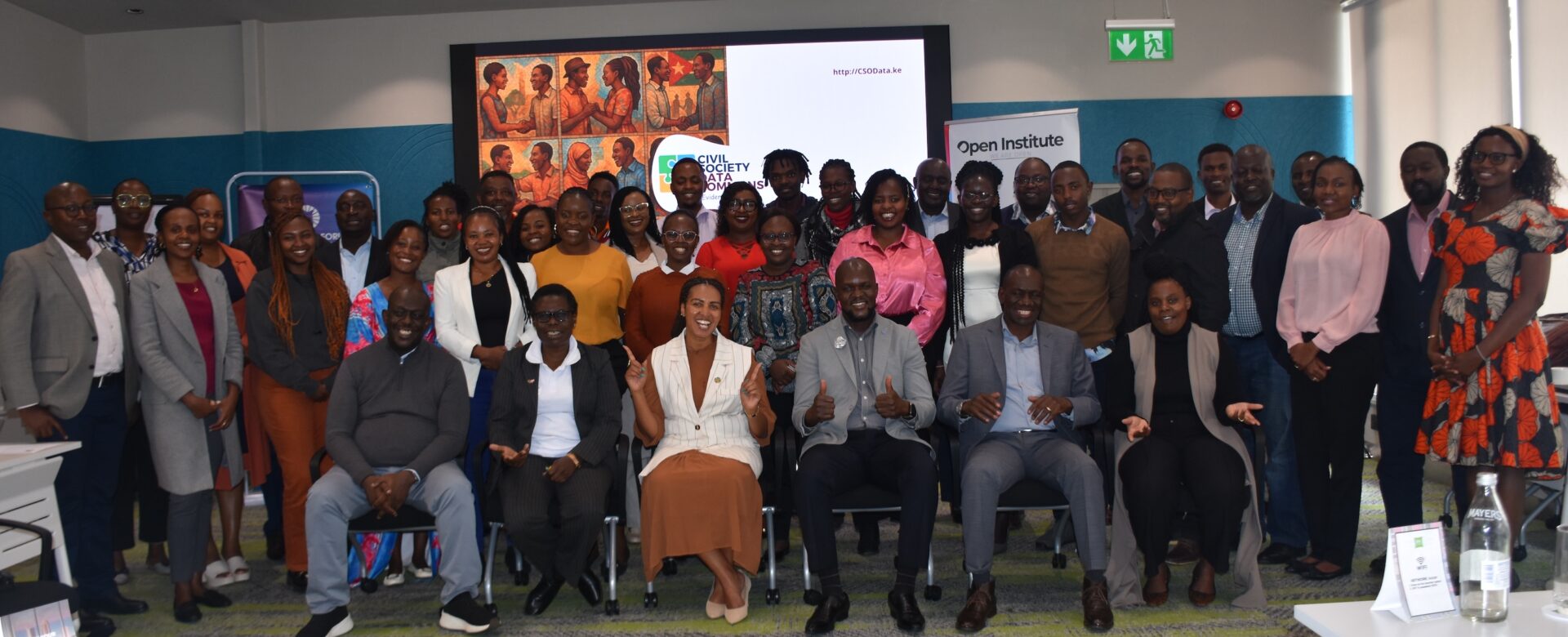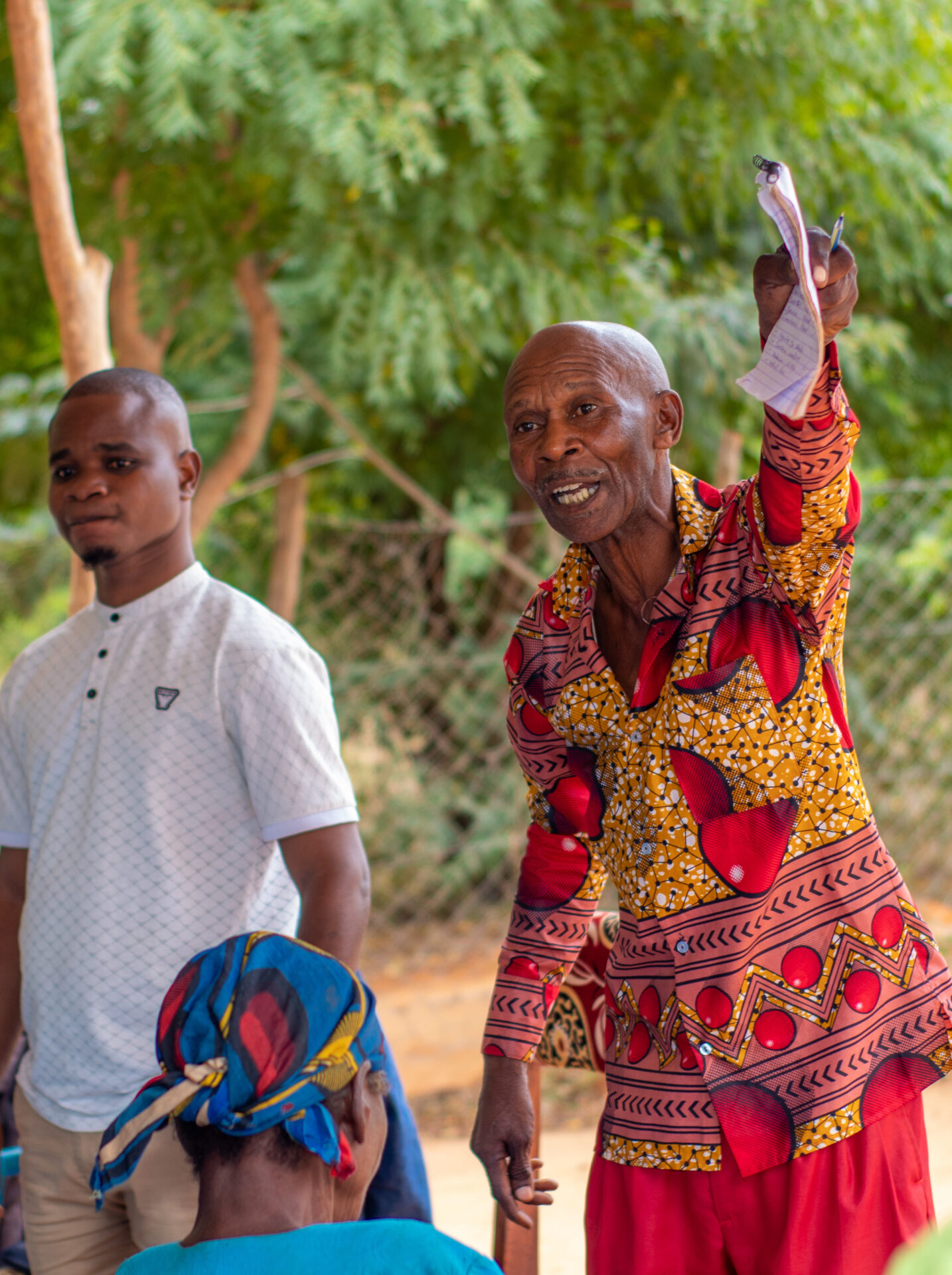This is a guest post from Dr. Bitange Ndemo
I spent most of last week in Dar es Salaam, Tanzania, attending the Africa Open Data Conference at the ultra-modern Julius Nyerere Convention Centre.
I moderated one of the sessions and was also a discussant on the future of Open Data in Africa. The room was full of experts from across the world, all of them data enthusiasts keen on explaining why it is important to embrace the concept of Open Data.
The Africa Open Data Conference is one of the efforts to get Africans to utilise Open Data as a new public resource that is transforming communities and nations across the world.
As the organisers here have noted in the conference material, Open Data is driving innovation, investment, and job growth and revolutionising transportation, health, education, and agriculture, civic engagement, IT innovation, and government transformation.
Although Africa needs Open Data perhaps more than any other part of the world, it is the last frontier of resistance to openness. Yet this may be our last chance to create a sustainable revolution that would confine poverty and disease to the dustbin of history.
Multilateral agencies like the United Nations and the World Bank have endorsed the concept of Open Data, which they consider to be key to economic development. They trained their eyes on Africa to ensure that the continent is not left behind.
In July 2012, the UN Secretary General, Ban Ki Moon, appointed a High Level Panel of Eminent Persons on the Post-2015 Sustainable Development Agenda. In its report, the panel calls for the building of a global data consensus.
Part of the report reads, “Too often, development efforts have been hampered by a lack of the most basic data about the social and economic circumstances in which people live… Better data and statistics will help governments track progress and make sure decisions are evidence-based; they can also strengthen accountability.”
In March 2015, I was privileged to be among the people from different African countries who gathered in Addis Ababa, Ethiopia, for the High-Level Conference on the Data Revolution in Africa.
The outcome of the conference was a resolution on African Data Consensus which was adopted by the African Union Summit.
Since then, very little has happened, especially around the sensitisation of citizens and governments on the benefits of Open Data. Yet the implementation of the the post-2015 development agenda, which is expected to be adopted at the United Nations Sustainable Development Summit on 25 – 27 September 2015, in New York, will be predicated on Open Data.
After its adoption, many development agencies will peg their lending, as well as donor activities, around Sustainable Development Goals (SDGs).
Since most policy implementers have not linked the concepts of Open Data to SDGs, there is likely going to be total confusion on the development agenda. Governments in Africa must therefore begin to connect what goes on in high-level conferences to what implementers as well as general citizenry are doing on the ground.
We saw this disconnect during the implementation of Structural Adjustment Programs and even the recent Millennium Development Goals(MDGs), where some implementers were silently asking what the concepts were all about. The fear of looking foolish in the presence of acronym-filled, high-level presentations is real.
Even more frightening is the prospect of having your country left behind. Leaders, policymakers, and technocrats need to keep tabs on Open Data. More than ever before, we need governments to release all manner of data to a public platform. This is necessary in order for the right arm of government to know what the left is doing.
THE COST OF PANADOL
For example, while health data on stunting, analysed together with education data is a great predictor on the performance of students in future, it is also equally important to social security in the allocation of social welfare benefits.
Such data is critically important for a Member of Parliament (MP) or a Member of the County Assembly (MCA). It can help them to raise an alarm early enough to save the future of their own people, assuming, of course, that such leaders are data literate.
Equally important is the prospect of eventually making our representatives accountable for their actions if, for example, we mapped county resources or Constituency Development Fund (CDF) against poverty maps as a strategy of eradicating poverty.
If each country opens its data, we can begin to find out, for example, how much the Ministry of Health in Kenya paid for Panadol in public hospitals in relation to the amount paid by the Ugandan Ministry for the same Panadol.
This comparative pricing would cause Ugandans to ask why their Panadol costs more than Kenyan Panadol assuming that was the case, and vice versa. The benefits arising from efficiencies created are enormous. The US government estimates the value of government Open Data at $3billion annually, and rising.
Through greater productivity, governments can realise more resources for better pay, especially for teachers and doctors. Greater productivity is a product of capacity-building in analytics, especially in data science.
THE NEED TO ANONYMISE
Unfortunately, apart from some in South Africa, African universities are yet to create new programs in data science. Our institutions must always be curious of dynamic changes elsewhere, and must send their faculty on exchange programs in order to keep pace with technological developments. Africa must begin to own its destiny.
The continent must leverage the goodwill of many international academics and start collaborations that benefit Africa. The anti-Western radicalism of African academics in the past has cost us tremendously. Ironically, some of the erstwhile critics are now resident in the countries they criticised the most.
As we begin the process of transforming Africa through data, we must be cognisant of the genuine fears from various civil society organisations that greater appetite for data may lead to individual privacy being compromised. This is why we need a comprehensive policy and legal framework to compel users of data to anonymise personal data whenever it is used.
There are unfounded fears among some developing-country governments that the data revolution is yet another donor-driven offensive, powered either by the hope that it will provide a technical fix for protracted economic, social and environmental problems, or that it is a mission to push yet more performance frameworks in disguise.
Africa must rise above petty fear-mongers and genuinely start a transformation revolution.
THE CASE OF TANZANIA
Two weeks ago, Tanzania launched its Open Data portal and released several datasets. It is also one of the first African countries to join the Open Government Partnership and has filed its second action plan along with South Africa. Kenya, which was among the first countries to develop the first action plan for open governance, now lags behind.
Tanzanians are more open than we know. At the National Museum, they have laid bare all the six vehicles that their founding President Julius Nyerere used, and the story of how they were acquired.
The green 1940 Austin Morris was his first vehicle. He used it to mobilise the Tanganyika African National Union (TANU), which was the principal political party in the struggle for sovereignty in Tanganyika (now Tanzania).
Julius Nyerere formed the party in 1954, initially as Tanganyika African Association, while teaching at St. Francis’ College (now Pugu High School). He donated the vehicle to the TANU youth league.

The green 1940 Austin Morris (left) was Julius Nyerere’s first vehicle and the grey 1945 Austin Morris was his second vehicle. Both are displayed at the National Museum of Tanzania. PHOTO | BITANGE NDEMO
The 1945 grey Austin Morris was his second car and he used it extensively to organise TANU’s campaigns in late 1950’s. After coming to office, he inherited the 1938 Rolls Royce from the Governor, Sir Richard Turnbull, the last governor of Tanganyika. Nyerere never quite used this luxurious vehicle; rather visiting dignitaries, including Emperor Haile Selassie, used it. In 1965, President Nyerere received a new Rolls Royce Phantom from the British Government.

The 1938 Rolls Royce that Julius Nyerere inherited from the last Governor of Tanganyika, Sir Richard Turnbull (left) and the Rolls Royce Phantom he received from the British government in 1965, displayed in the National Museum of Tanzania. PHOTO | BITANGE NDEMO
The state vehicle was used for several years by successive presidents, including Hassan Mwinyi and Benjamin Mkapa, before it was retired into the Museum. When President Nyerere was not using the Phantom, he would be using the 1967 cream Mercedes Benz 230.6. There were three of these, but two were reserved for the other two Presidents in East Africa, having been bought by the East African Community whose headquarters was and continues to be in Arusha, Tanzania.
Nyerere was a modest man compared with his peers in the region who had fleets of luxury vehicles, including a number of Mercedes 600. In his retirement, the state bought him the white Mercedes E300.

Mercedes cars used by the first President of Tanzania, Julius Nyerere, displayed at the National Museum of Tanzania. PHOTO | BITANGE NDEMO
When President Nyerere visited Kenya and discovered that his ideological comrade Oginga Odinga had a private enterprise, he chuckled, telling Odinga that he did not know he was a capitalist all along.
That aside, Tanzanian leaders today travel in luxury that would make their Kenyan counterparts envious. Nyerere is obviously turning in his grave.
THE COST OF A MINISTER
As we drove through Barack Obama Drive, four sets of powerful four-wheel drive motorcades drove by on the right side, guided by an outrider and a police car in intervals of 10 minutes. I asked my driver whether that was the President.
Hapana, ni waziri (No, it is a Minister). A Minister with six four-wheel-drive vehicles? As we speak, another set zooms by, still another Minister. Further down, another set with more vehicles this time. Who? That is the Chief of General Staff.
We need Open Data in Tanzania and in all its neighbours. That way, all the citizens can begin to compare what it costs to maintain one Minister in their countries. Tanzania will certainly lead the chart. And if we make comparisons with Luxembourg for example, you will understand why a Minister in that country drives himself or herself to work.
The citizen will begin to ask if the meagre resources available are to salvage our children from stunting or should be used to pamper one fully-grown Minister. We have to ask ourselves hard questions.
However, in order for the citizens to ask these questions, we must empower them with data.
The writer is an Associate Professor at University of Nairobi’s Business School and a former Permanent Secretary in the Ministry of Information. Twitter:@bantigito
Photo credit: <a href=”https://www.flickr.com/photos/jepoirrier/878767709/”>jepoirrier</a> via <a href=”http://foter.com/”>Foter.com</a> / <a href=”http://creativecommons.org/licenses/by-sa/2.0/”>CC BY-SA</a>













